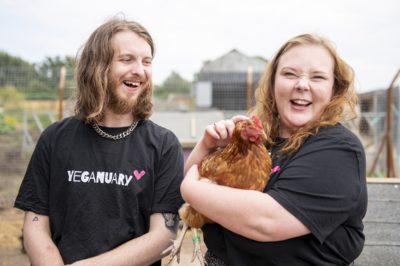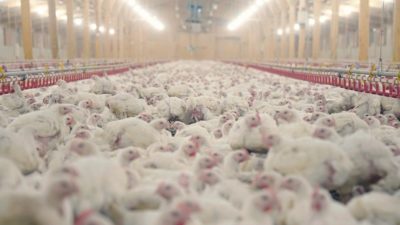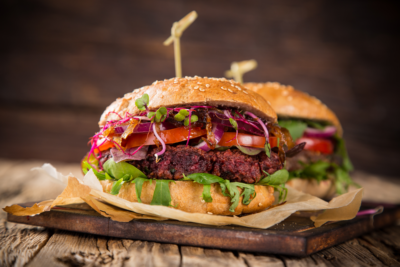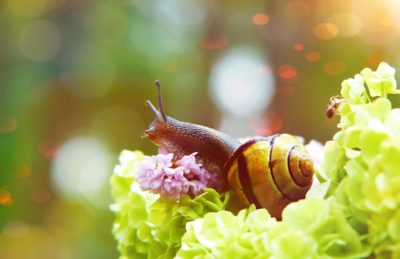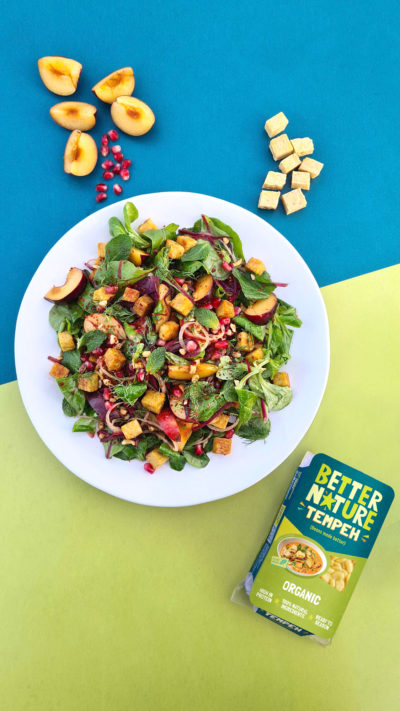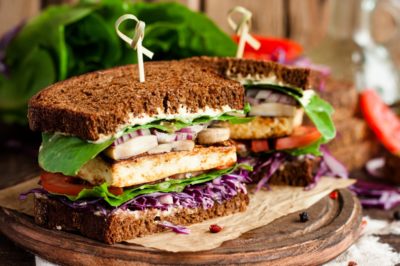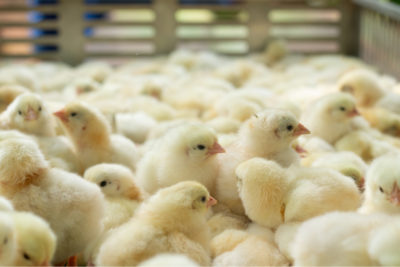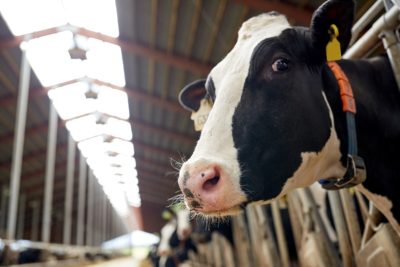Farmed chickens are killed in far greater numbers than any other species, making them the most abused animal in the farming world. Here, we highlight the suffering caused by intensive chicken farming in the UK.
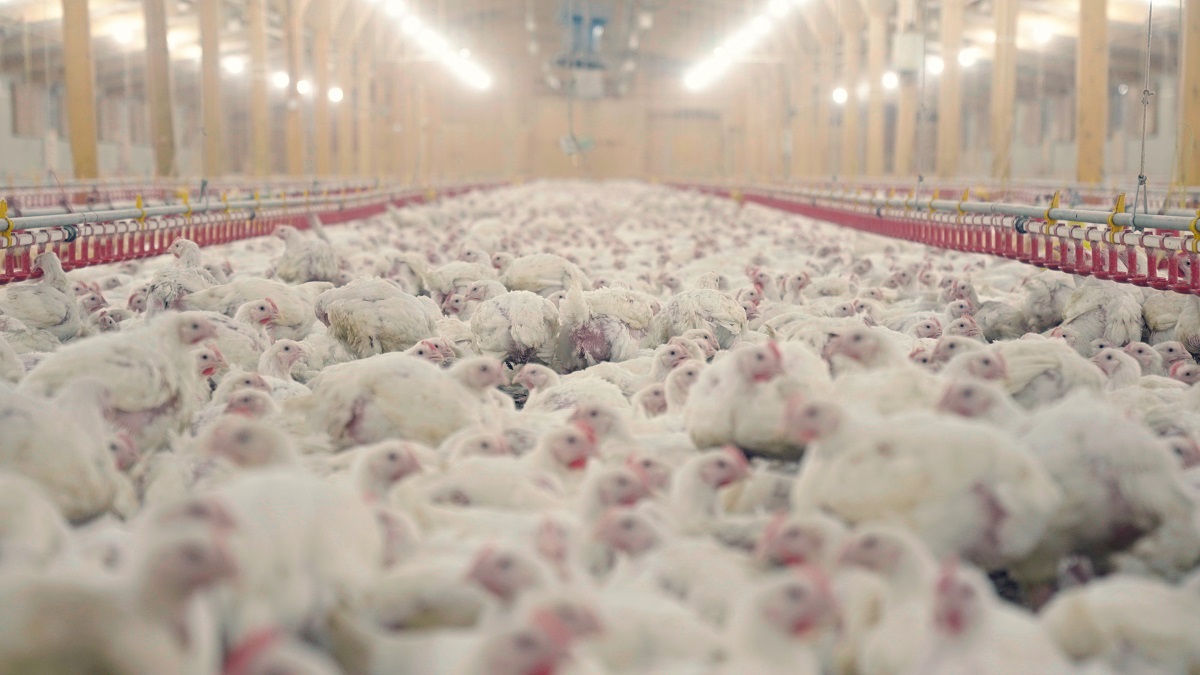
There are two types of chicken on British farms: those reared for their flesh and those bred for their eggs. Both endure some of the worst conditions on farms, which is why we launched our Choose Chicken Free Campaign.
Chickens reared for meat
Around a billion chickens are slaughtered for meat in the UK each year, and the vast majority – around 94% – are reared inside factory farms. There is nothing natural about factory farmed chicken.
Chickens don’t get to scratch in the dirt, dustbathe or even breathe in the fresh air. Because they’re bred to grow as big as possible as quickly as possible, their bodies outgrow their bone strength and their legs may break beneath them.
Those who cannot stand up suffer skin burns from the ammonia in the litter. Their hearts cannot cope with their ballooning weight either, and heart failure is all too common.
This is what a typical farm looks like for factory-farmed chickens…
Track their lives from happy young chicks to lethargic, sick and dying birds, all in just six weeks.
Hens used for eggs
Around 13.5 billion eggs are eaten each year in the UK alone. There are three farming systems within the UK for producing eggs: caged, barn and free-range.
Caged hens
Although the battery cage was banned in the UK in 2012, millions of birds were simply moved into ‘colony cages’ which are bigger, have one small perch and a scratchpad, and a lot more hens inside.
There can be as many as 80 birds to a cage. They will never be able to express their natural behaviours, such as nesting, foraging and dustbathing. Artificial lights are switched on for prolonged periods, encouraging them to lay even more eggs.
Many chickens suffer foot deformities from standing on the wire cage floors, while others are completely featherless. The overcrowded conditions allow diseases to spread quickly.
More than one-third of all eggs produced in the UK come from caged hens.
This is what colony caging looks like…
Barn systems
Around 1% of eggs come from barn-reared hens in the UK. The word ‘barn’ may suggest an old-fashioned coop in a farmyard, but in fact, these huge warehouses can hold up to 16,000 birds.
They have more space to move around in but they still don’t have access to the outdoors. The overcrowding creates the same welfare problems for them as for those birds kept in cages.
Free-range
Free-range is not all it’s cracked up to be. When you imagine free-range chicken farming, do you envision a few happy hens running around a yard?
Sadly, this isn’t the reality for most chickens at all. This is a large-scale industrial business, with tens of thousands of birds kept inside a barn.
Along the sides are ‘pop-holes’ which allow hens access to the outside world, but only when weather permits. Because hens are territorial, weaker birds may not cross a stronger bird’s space, and will never get outside.
Those who do venture out may be more susceptible to disease because they’re the same in-bred strains as those in closed systems and are not hardy enough to cope with bugs in the outside world.
This is what free-range looks like at the Happy Egg Company…
Suffering in all systems
No matter the system, suffering is inherent in egg production. The birds’ breeding and environment are manipulated to ensure they lay as many eggs as possible – around 300 per bird per year.
All those eggs need shells, and shells are made from calcium. This mineral is taken from the birds’ bones which leaves them susceptible to broken legs and wings. It’s a price the industry is willing to pay for plentiful eggs.
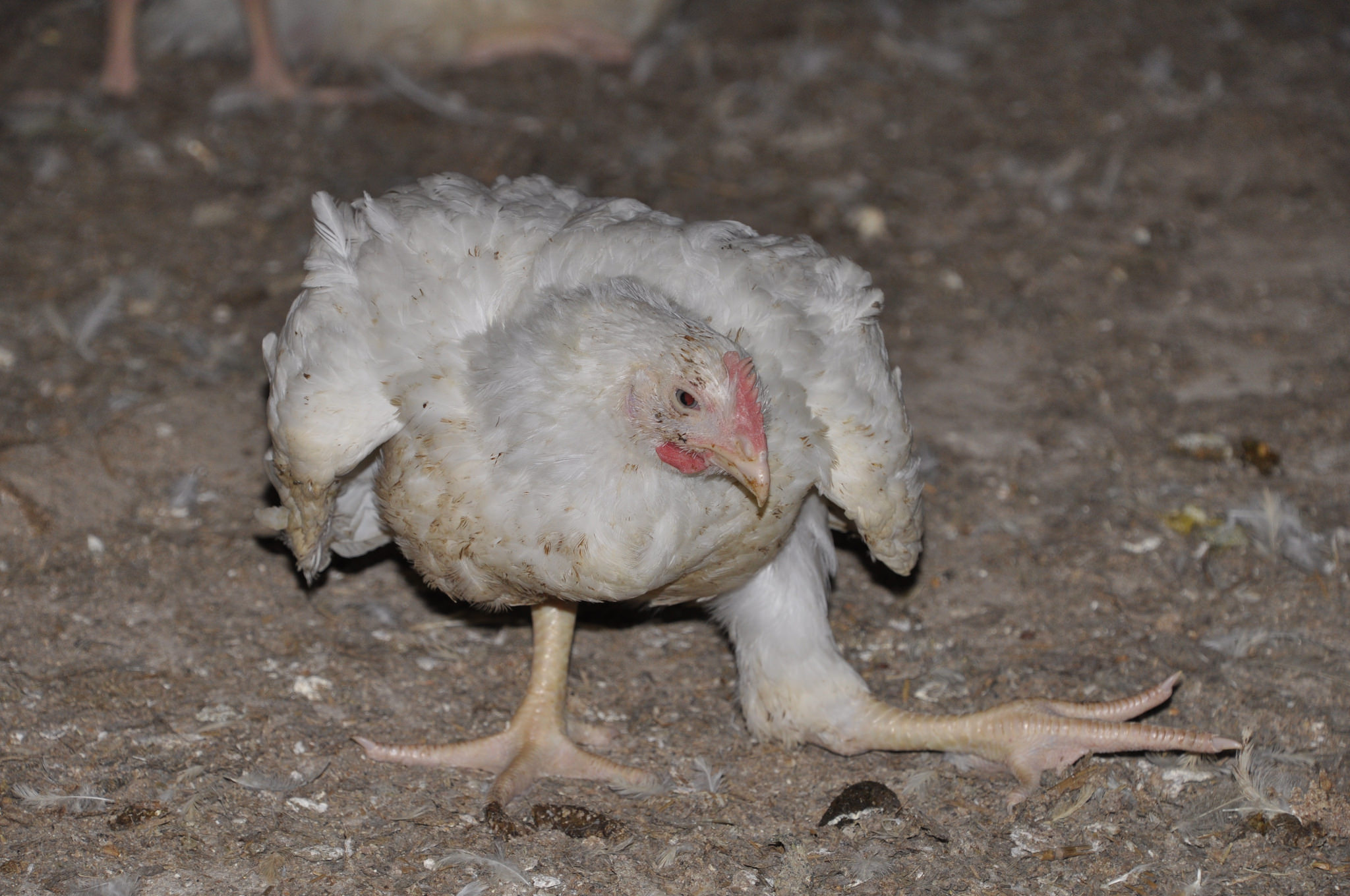
The stress of living in these conditions can cause the birds to wound one another. The industry’s response is not to give them a better life, but to remove the end of their beak when they are day-old chicks. It’s a process that is painful, and complications can cause life-long suffering.
What happens to male chicks?
Male chicks born into hatcheries have very short lives. They are the wrong sex to lay eggs, and the wrong breed for meat, and so their lives are deemed to be worthless. Millions of them are gassed to death on their first day of life.
Their sisters are useful only while their egg production is at a peak. When it starts to decline, they’re disposed of, too. They’re sent to slaughter, and their scrawny bodies turned into low-grade chicken products when they are typically just 18 months old.
All chickens are sent to slaughter
Chickens reared for meat and those used for eggs are all sent to slaughter, and it’s a process that is both painful and frightening for the birds.
They may be caught by catching gangs, who grab several birds at a time, holding them by their legs, wings and sometimes necks, and stuff them into crates. This rough treatment often results in hip dislocation and broken bones.
Some farms have mechanised ‘harvesting’, where a machine sweeps the birds onto a transport belt and into a drawer.
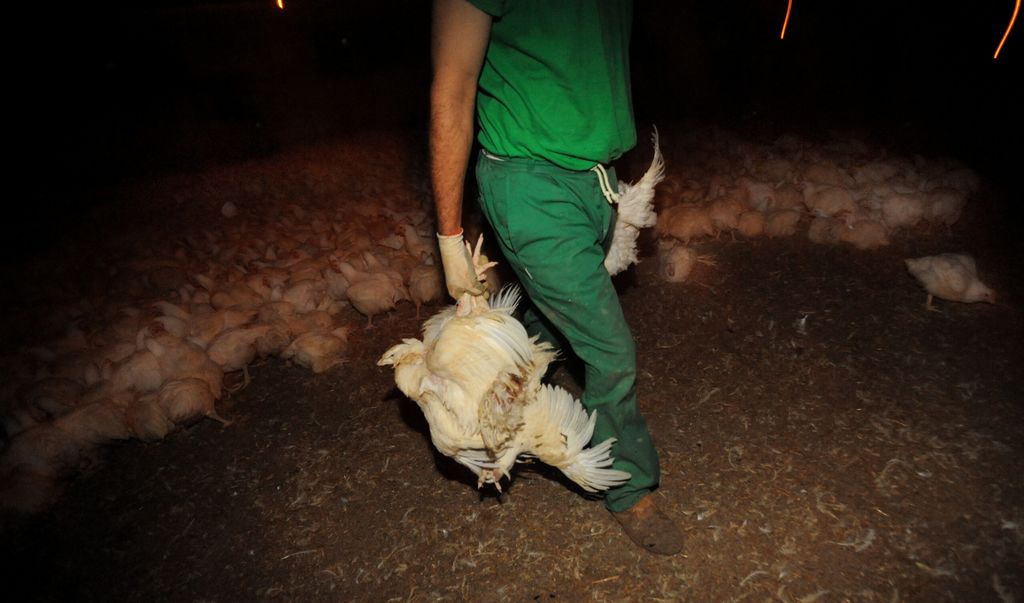
How old are chickens when slaughtered?
Chickens killed for meat are sent to slaughter at around 42 days old in the UK. Hens used for eggs are slaughtered at around 18 months old, when their productivity starts to decline.
Even though they can live for anything up to 10 years, their lives are cruelly cut short by the meat and egg industries.
Transportation
There is no specific maximum journey time for transporting chickens. Some birds will have to face long-distance journeys in transport lorries, which can last 24 hours for newly-hatched birds and 12 hours for adult birds before they are provided with food and water.
At the slaughterhouse, the birds are shackled upside down by their legs while fully conscious. Imagine the pain of being suspended this way on broken legs.
The line moves, dragging the birds’ heads through electrified water which should render them unconscious. But, if the birds are small or the water level is too low or insufficient voltage is used, the chickens will go to the knife fully conscious.
Stunned or not, the line keeps moving, and the birds’ necks are cut mechanically.
Increasingly, chickens are stunned and killed by exposure to carbon dioxide gas, a process that, according to Compassion in World Farming ‘causes the bird’s respiratory distress – hyperventilation and gasping’.
There is no kind way to rear chickens, and no kind way to kill them, either.
Smart, sweet and social
Anyone who has ever met a chicken will know what huge characters they can be. They’re active, inquisitive and love to root around, foraging and exploring.
They dustbathe and preen to keep their skin and feathers in tip-top shape, and love to sunbathe, lying on their sides, wings outstretched, eyes closed.
As soon as they hatch, they’re able to recognise their siblings and, if given the chance, will choose to stay with each other. They are social animals and form strong friendships, but the huge flock sizes on modern farms are unnatural and stressful.
We use the phrase ‘mother hen’ to describe someone who is a very protective mother, and that’s because chickens are fantastic mums.
Even while still in the egg, they will communicate with the embryo, and he or she will respond. The bond is powerful and it begins even before the chick has even hatched.
Take a look at how a hen cares for her chick.
If you’re shocked by the reality of intensive chicken farming in the UK, you can do something about it! Sign up to try vegan with us and we’ll send you delicious recipes, tips for finding chicken alternatives and much more.

